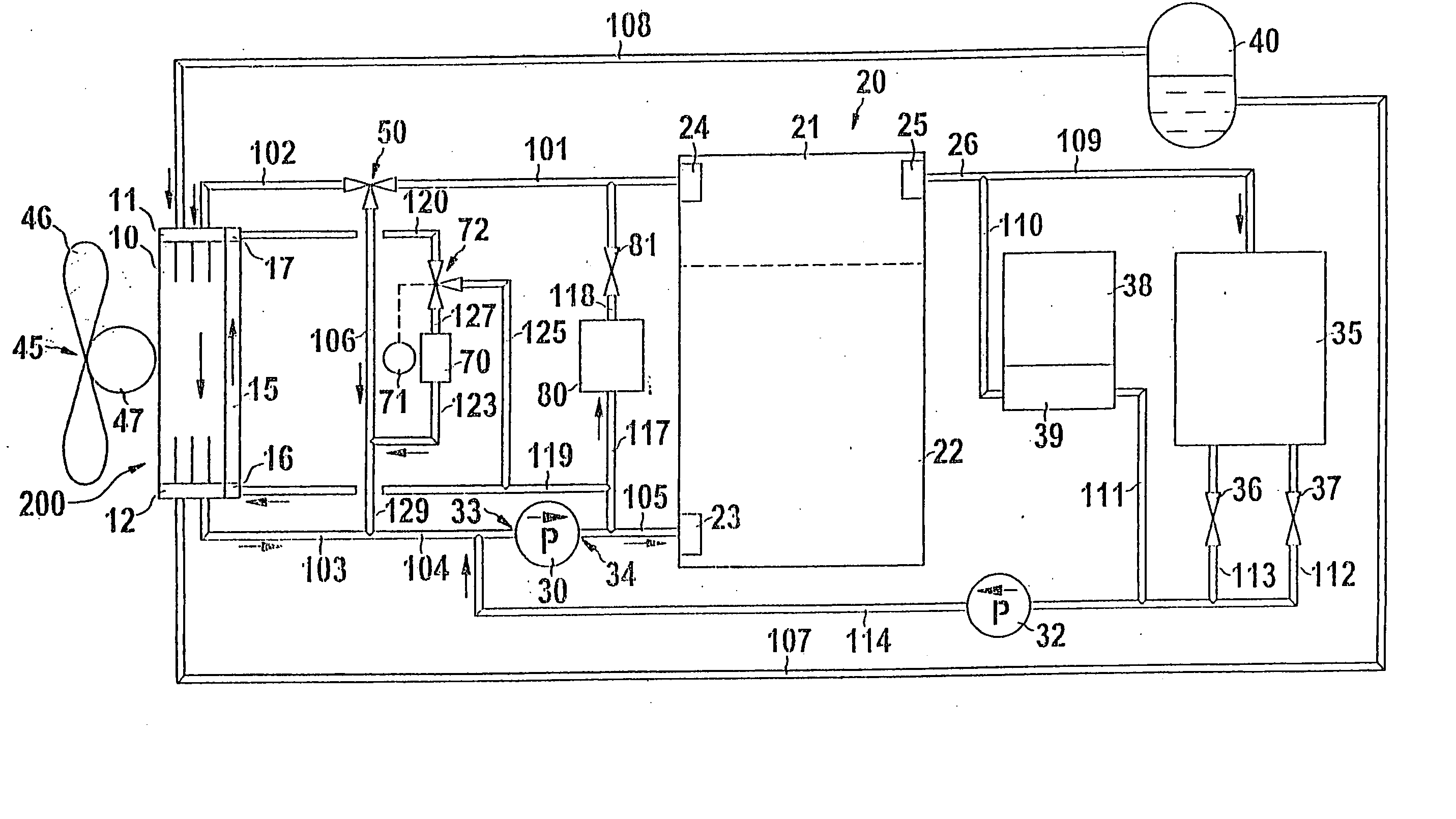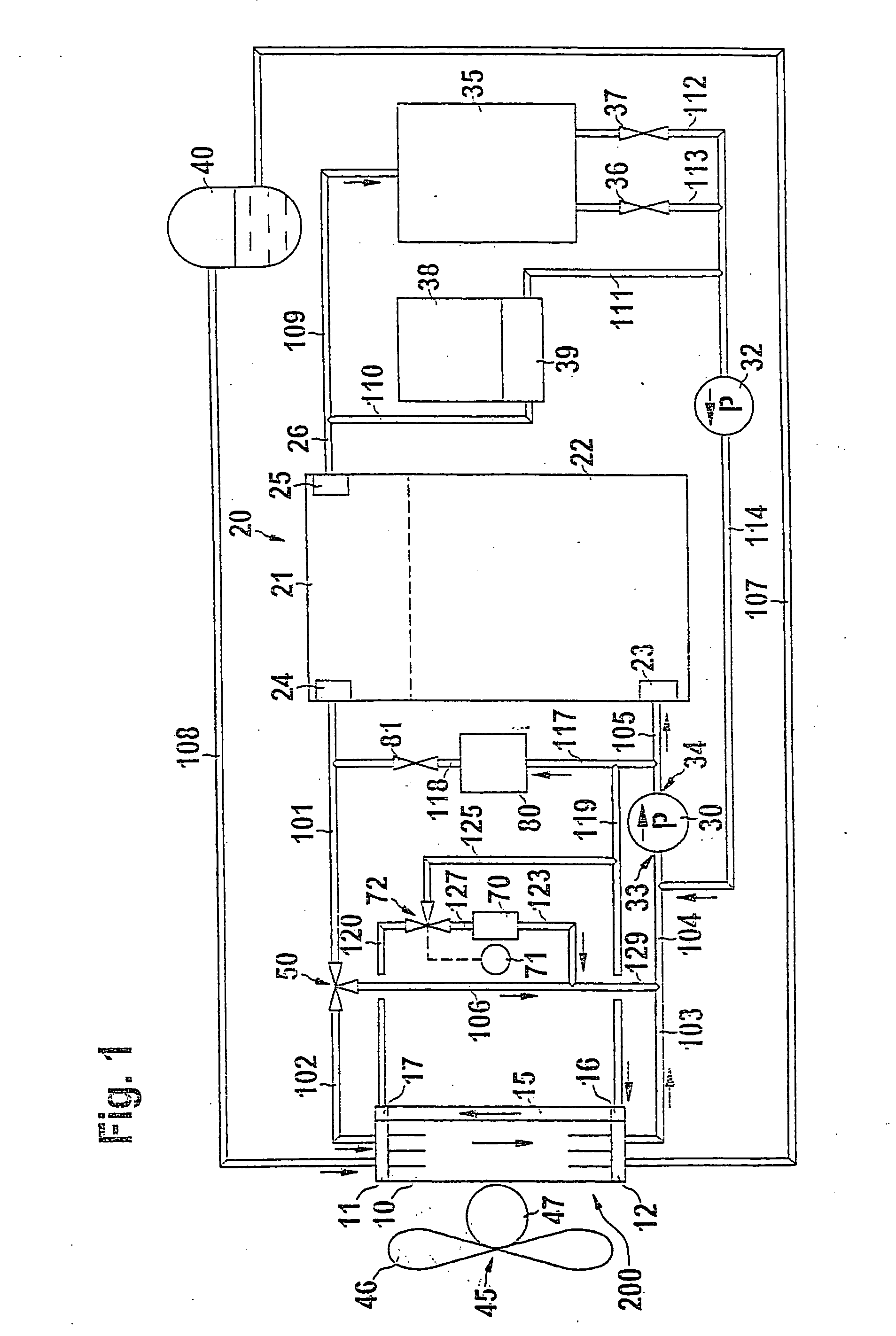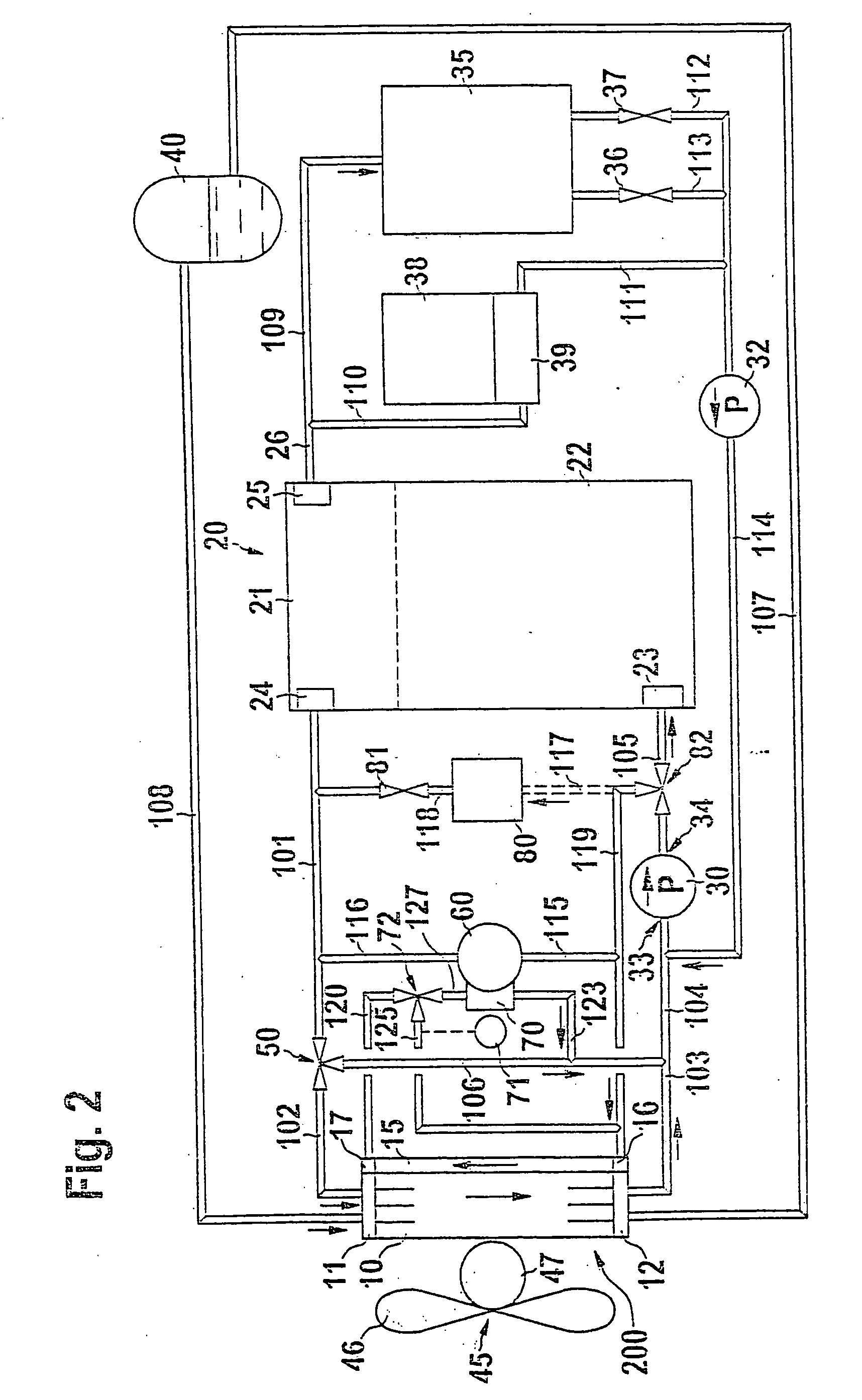Device for cooling and heating a motor vehicle
- Summary
- Abstract
- Description
- Claims
- Application Information
AI Technical Summary
Problems solved by technology
Method used
Image
Examples
Embodiment Construction
[0042] The first description will be of those components of the apparatus according to the invention for cooling and / or heating a motor vehicle, which are essentially the same for the embodiments according to FIGS. 1 to 3.
[0043] In the embodiments of the cooling system according to the invention shown in FIGS. 1 to 3, the apparatus includes a main cooler segment 10, which has a main cooler inlet 11 and a main cooler outlet 12. Adjacent to the main cooler segment 10, there is a cooling fan 45. The cooling fan 45 has a fan 46 and a fan motor 47. A compensation receptacle 40 is connected to the main cooler inlet 11 via a line section 108 and is connected to the main cooler outlet 12 via a line section 107.
[0044] The apparatus according to the invention, which is also referred to below in the same sense as a cooling system, serves primarily to cool an internal combustion engine 20. In a simplified representation, the engine 20 has a cylinder head 21 and an engine block 22. A coolant inl...
PUM
 Login to View More
Login to View More Abstract
Description
Claims
Application Information
 Login to View More
Login to View More - R&D
- Intellectual Property
- Life Sciences
- Materials
- Tech Scout
- Unparalleled Data Quality
- Higher Quality Content
- 60% Fewer Hallucinations
Browse by: Latest US Patents, China's latest patents, Technical Efficacy Thesaurus, Application Domain, Technology Topic, Popular Technical Reports.
© 2025 PatSnap. All rights reserved.Legal|Privacy policy|Modern Slavery Act Transparency Statement|Sitemap|About US| Contact US: help@patsnap.com



